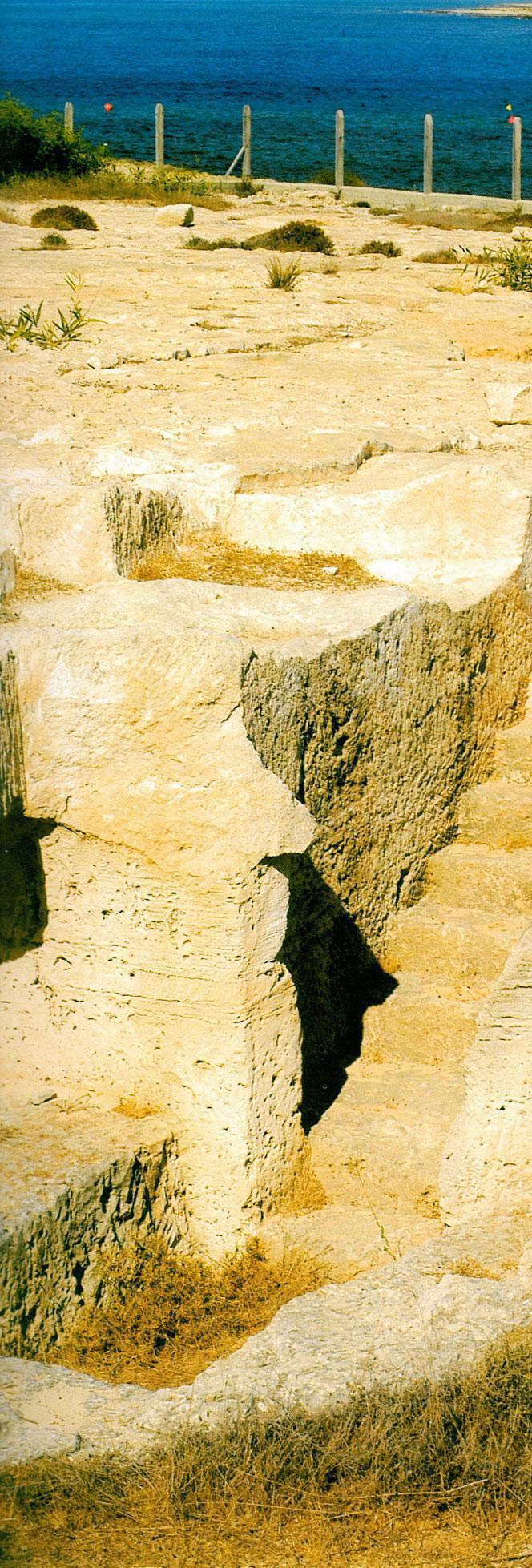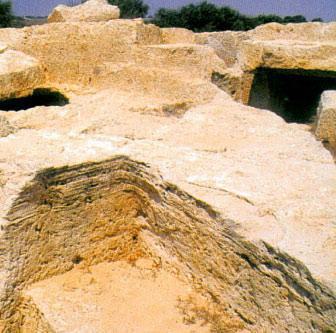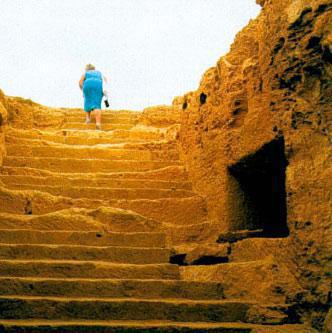- Our Municipality
- Services
- Visitors
- Information
- Documents
- Contacts
The Makronisos Tombs
One of Agia Napa's most interesting discoveries found west of Agia Napa village in the locality of Makronissos, was the discovery of an ancient burial site. Between November 1989 and earl/January 1990. the Municipality of Agia Napa sponsored intensive excavations of the rock-cut tombs, which have been the target of illegal digging since 1872.
Nineteen tombs have been excavated to date together with a small sanctuary to the east of the burial grounds and part of an ancient quarry adjacent to the cemetery. Recent studies indicate that some of the tombs suffered as a result of the continuous use of the quarry.
The tombs generally consist of a stepped road, which leads down to a rectangular entrance. The entrances were originally closed with one large or two smaller calcarenke slabs.
Most of the chambers are almost identical. They are all provided with a rectangular trench in the middle, slightly lower than the floor of the road and three benches at the sides of the chamber.
Some of the tombs have additionally one loculus carved on the longitudinal axis of the tomb opposite the entrance, while another is provided with four benches at the sides and one opposite the entrance, thus providing room for five internments. Although all tombs were looted and disturbed, some logical scientific conclusions may be drawn.
The dead were placed in clay sarcophagus, which were originally covered with three flat titles. The tombs were used during the Hellenistic and Roman period.
The tombs were used during the Hellenistic and Roman period.
The pyres found on the surface by the roads show clear evidence of practising Greek burial customs.
The sanctuary is a simple rectangular enclosure constructed with large irregular blocks. The few offerings found during the 1974 archaeological survey as well as those found during the latest excavations dace the sanctuary to the Cyprus-Classical and Hellenistic period.





